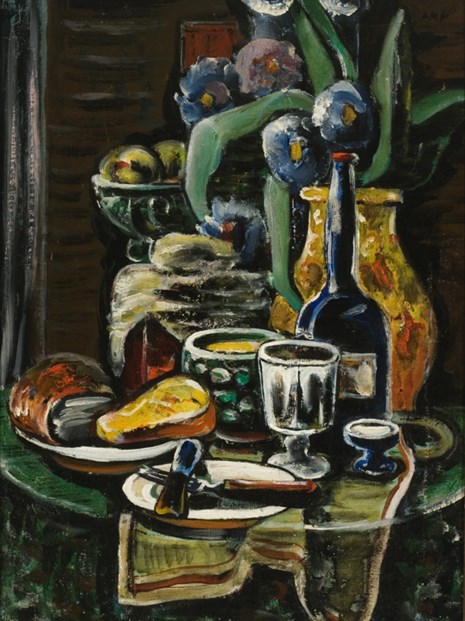Adomas Galdikas was a prolific artist, who worked intensely, experimented continuously with artistic expression, and tried his hand at many different forms of art. In his large and stylistically varied output, his works from the interwar period stand out as being especially interesting. He painted many still-lifes during that time, and has gone down in the history of Lithuanian art as a very talented artist in the genre.
The still-life painted by Galdikas around 1930 features a common motif of a small round table laden with various objects, such as bowls of food, plates, cups, a bottle, and a vase of flowers. The composition is clearly structured and solidly crafted. The forms of the items depicted are generalised and geometric; the expressive silhouettes of the vessels introduce a liveliness into the painting which looks decorative thanks to the rhythmic alterations of patches of colour. The dramatic colour scheme in rich dark tones and the generous use of black are typical features of Galdikas' work from that period. He painted in a dynamic and rather rough manner, with prominent brushwork, seemingly reflecting the artist's character, which was described by his contemporaries as energetic and impulsive.
This still-life fuses the influences of Expressionism, Art Deco and Lithuanian folk art which dominated in Galdikas' work at the time. Soon, however, his stylistic development took a more moderate turn, and shifted towards more strongly controlled painting, at the same time as putting aside the still-life genre. Finally, after emigrating to the West, he was attracted by abstraction, which dominated his latest creative periods.



